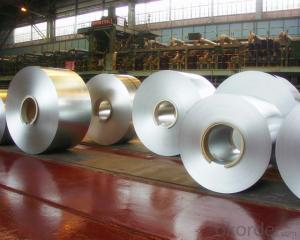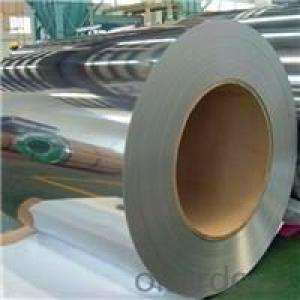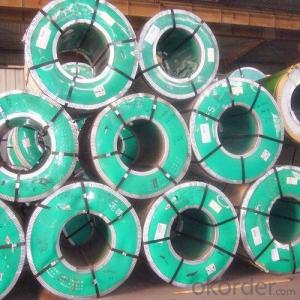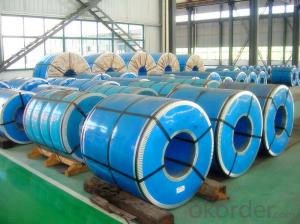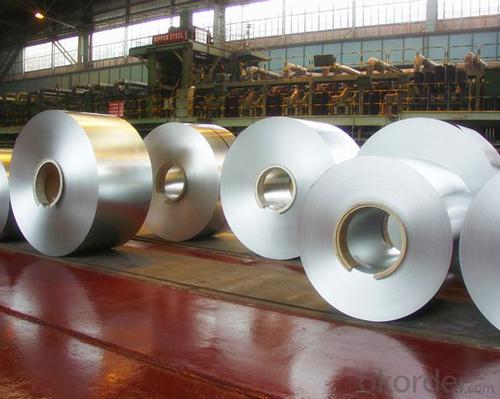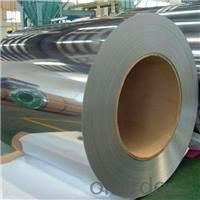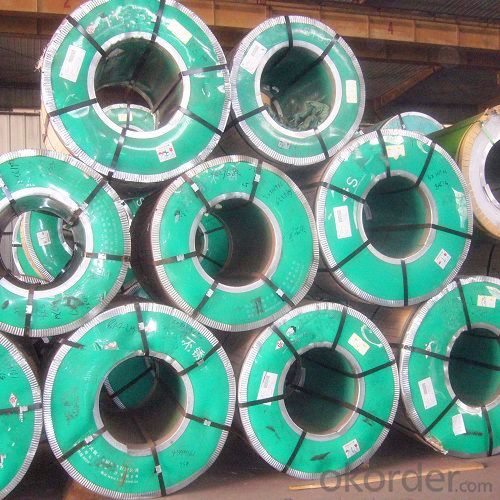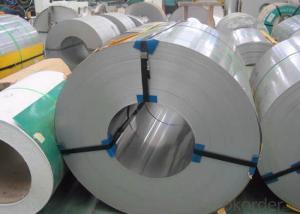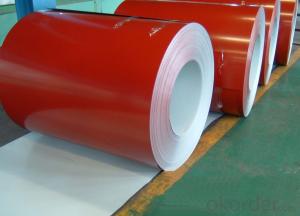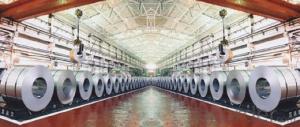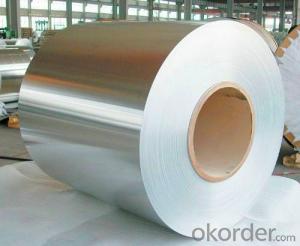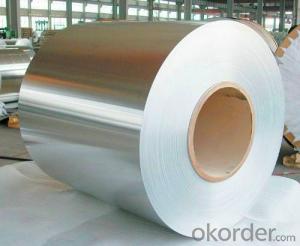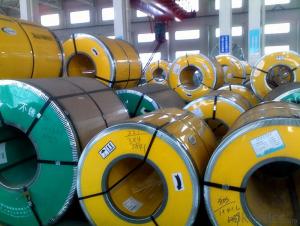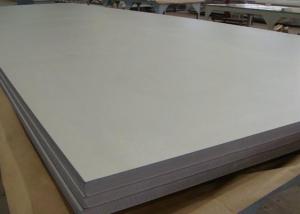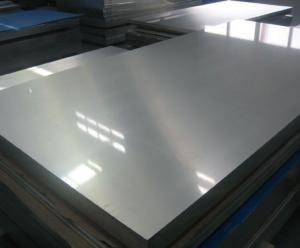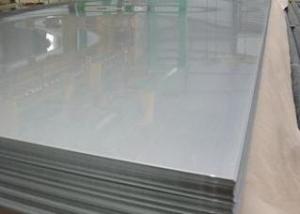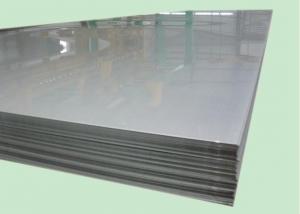Stainless Steel Coil Cold Rolled 304 With Best Quality
- Loading Port:
- China main port
- Payment Terms:
- TT OR LC
- Min Order Qty:
- 100 m.t.
- Supply Capability:
- 5000 m.t./month
OKorder Service Pledge
OKorder Financial Service
You Might Also Like
1.Structure of Stainless Steel Coil Cold Rolled 304 With Good Quality
Cold Rolled stainless steel Coil with good quality is one of the raw material of the cold
rolled stainless steel Coil, which can be used directly in many places. Stainless Steel
(Stainless Steel) is short for acid-proof Stainless Steel, resistant to weak corrosive
medium such as air, steam, water, or with a Stainless Steel grade.
2.Main Features of Prefabricated Steel Structure High Building Project
Weld-ability: The purpose of the different requirement for welding performance are
different.1 Kind of tableware generally do not require the performance of welding, even
including some pot class enterprise. But the vast majority of products all need raw
materials welding performance is good, like the 2 kinds of tableware, thermos flask, steel
pipes, water heaters, water dispensers, etc.
Heat resistant performance Heat resistant performance refers to the high temperature
stainless steel can still maintain its excellent physical and mechanical properties. Carbon:
the influence of carbon in austenitic stainless steel is formed strong and steady. Set the
austenitic austenitic area and expand elements. Carbon formation of austenite is about 30
times that of the nickel, the ability of carbon is a kind of gap elements, through the solid
solution strengthening can significantly increase the strength of the austenitic stainless
steel. Carbon austenitic stainless steel can be improved in high concentration chloride
(e.g., 42% MgCl2 boiling solution) in the performance of the resistance to stress corrosion.
But, in the austenitic stainless steel, carbon is often seen as the harmful elements, this is
mainly due to the corrosion of stainless steel used in some conditions, such as welding or
heating by 450 ~ 850 ℃), carbon steel with chromium in forming high chromium Cr23C6
type carbon compounds which can lead to local chromium depletion, make steel corrosion
resistance especially resistant to intergranular corrosion performance degradation. So.
Since the 60 s of the development of new Cr-Ni austenitic stainless steel is mostly carbon
content less than 0.03% or 0.02% of the ultra-low carbon type.
3. Stainless Steel Coil Cold Rolled 304 With Good Quality Images
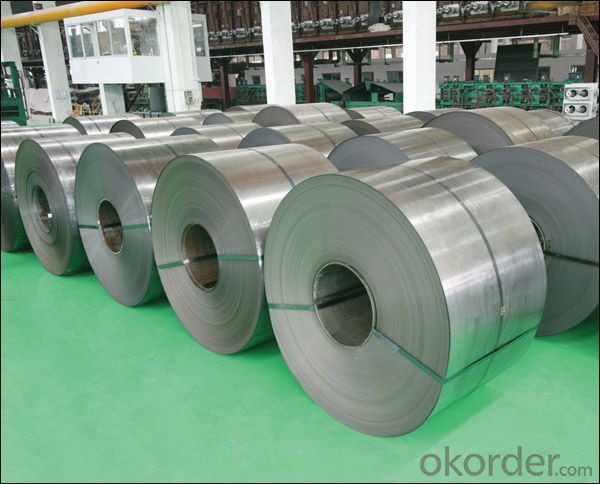
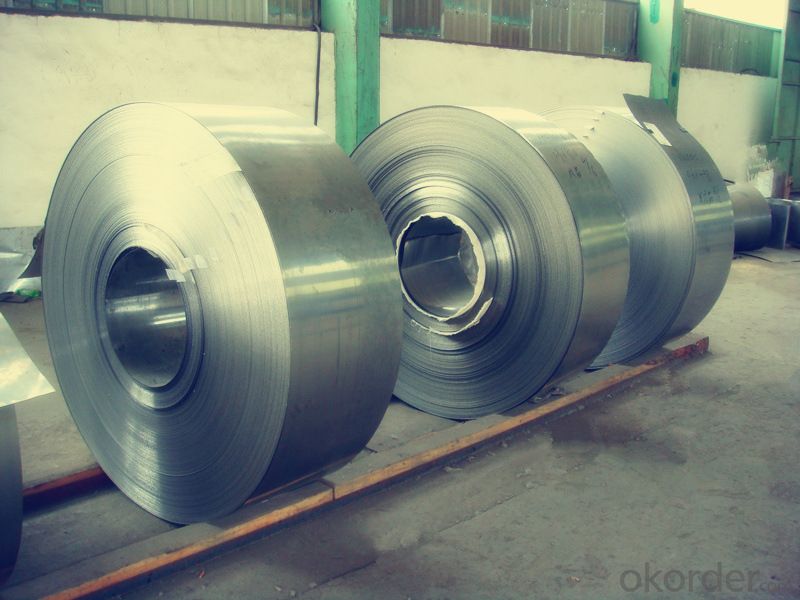
4. Stainless Steel Coil Cold Rolled 304 With Good Quality Specification
Ferritic stainless steel Chromium containing 15% ~ 30%. Its corrosion resistance,
toughness and weldability with chromium content increases with the increase of chloride
stress corrosion resistance is superior to other types of stainless steel, fall into this
category of Crl7, Cr17Mo2Ti, Cr25, Cr25Mo3Ti, Cr28, etc. Ferritic stainless steel because
of the high chromium content, corrosion resistance and oxidation resistance are relatively
good, but the mechanical properties and process performance is poorer, more used to
stress less acid structure and steel used as antioxidant. This kind of steel to withstand
atmosphere, nitric acid and corrosion of the brine solution, and has good high temperature
oxidation resistance, low thermal expansion coefficient, etc, used in nitric acid and food
factory equipment, also can make work under high temperature parts, such as gas turbine
parts, etc.
Austenitic, ferritic duplex stainless steel The advantages of both austenitic and ferritic
stainless steel, and has the superplasticity. Austenite and ferrite The title Each accounts
for about half of the stainless steel. In the case of contain low C, Cr content was 18% ~
18%, Ni content at 3% ~ 3%. Some steel containing Mo, Cu, Si, Nb, Ti, N and other
alloying elements. This kind of steel both austenite and ferrite stainless steel, the
characteristics of compared with ferrite, plasticity and toughness is higher, no room
temperature brittleness, intergranular corrosion resistance and welding performance were
significantly increased, while maintaining a ferritic stainless steel of 475 ℃ brittleness and
high thermal conductivity, has the characteristics of superplasticity. Compared with
austenitic stainless steel, high strength and resistance to intergranular corrosion and
resistance to chloride stress corrosion is improved obviously. Duplex stainless steel has
excellent resistance to pitting corrosion performance, is also a kind of nickel and stainless
steel.
5. Applications of Stainless Steel Coil 304 With Good Quality
1. Kitchenware: tableware, cookware, Stoves…
2. Food packing: storage cans, food containers…
3. Construction: bridge, roofing, wall, decoration, bathroom accessories…
4. Precision instruments: electrical products, aerospace…
5. Others: automotive parts, machine building, chemical processing, farming…
6.FAQ of Stainless Steel Coil 304 With Good Quality
We have organized several common questions for our clients,may help you sincerely:
How to guarantee the quality of the products?
We have established the international advanced quality management system,every link
from raw material to final product we have strict quality test;We resolutely put an end to
unqualified products flowing into the market. At the same time, we willprovide necessary
follow-up service assurance.
How is the packaging and delivery?
Standard export packing (Coil: waterproof paper + protective steel ring; Circle: wooden
box), or as your requirement and the delivery term is based on the project.
- Q: What are the different types of edges available for stainless steel strips?
- There are several different types of edges available for stainless steel strips, depending on the specific application and desired appearance. Some common types of edges include: 1. Mill Edge: This is the standard edge produced during the manufacturing process. It has a smooth, straight finish with no additional processing or treatment. 2. Slit Edge: This edge is created by cutting the stainless steel strip to the desired width using a slitting machine. It typically has a slight burr or roughness along the edge, which can be removed through deburring or other finishing processes. 3. Rounded Edge: Also known as a round edge or rolled edge, this type of edge is created by rolling the stainless steel strip to give it a curved or rounded profile. It provides a safer and more comfortable edge, making it suitable for applications where sharp edges could pose a risk. 4. Deburred Edge: This edge is achieved by removing any burrs or roughness from the edge of the stainless steel strip. Deburring is typically done using specialized equipment or processes to ensure a smooth and clean finish. 5. Beveled Edge: A beveled edge is created by cutting the stainless steel strip at an angle, usually 45 degrees, to create a sloping or chamfered edge. This type of edge is often used for aesthetic purposes or to facilitate welding or joining of the strips. 6. Custom Edges: Depending on the specific requirements of a project or application, custom edges can also be created. These may include different profiles, finishes, or treatments to meet specific functional or aesthetic needs. It is important to consider the intended use and requirements of the stainless steel strips when selecting the appropriate edge type. The choice of edge can impact the performance, appearance, and safety of the final product.
- Q: Can stainless steel strips be used in electronic applications?
- Stainless steel strips are indeed applicable for electronic purposes. Their exceptional corrosion resistance and mechanical properties render them suitable for a range of electronic components and devices. Connectors, terminals, springs, shields, and enclosures often utilize stainless steel due to its common usage. In electronic circuits, stainless steel strips guarantee dependable performance through their high strength and durability. Moreover, their non-magnetic properties make them an excellent fit for applications that demand minimal disruption to magnetic fields. All in all, stainless steel strips present numerous benefits for electronic use, which explains their popularity in the industry.
- Q: What are the recommended precautions for welding 111 stainless steel strips?
- To ensure safety and achieve quality welds when working with 111 stainless steel strips, it is crucial to take certain precautions. Here are some precautions that are recommended: 1. Proper ventilation is essential. When welding stainless steel, fumes and gases, including chromium and nickel, can be released, which can be harmful if inhaled. Therefore, it is necessary to work in a well-ventilated area or use local exhaust ventilation to remove the fumes from the work area. 2. The use of appropriate personal protective equipment (PPE) is important. Always wear a welding helmet with a shade lens that is suitable for protecting your eyes from the intense light and harmful radiation emitted during welding. Additionally, wear welding gloves, a flame-resistant jacket, and safety boots to protect your skin from sparks, molten metal, and heat. 3. It is recommended to use the correct welding technique. Stainless steel is susceptible to distortion and warping during welding due to its high thermal conductivity. Therefore, it is advisable to use a low heat input technique such as TIG (Tungsten Inert Gas) welding. This technique allows for better control over the heat input, minimizing distortion and achieving high-quality welds. 4. Properly cleaning the surface is crucial. Before welding, ensure that the stainless steel strips are clean and free from any contaminants such as dirt, grease, or oils. Use an appropriate cleaning agent and a stainless steel wire brush to remove any surface impurities. This helps prevent weld defects and ensures good adhesion between the strips. 5. The use of the correct filler material is important. When welding stainless steel, it is essential to use a filler material that matches the grade of the base metal. For 111 stainless steel, also known as AISI 304 or 18-8 stainless steel, it is recommended to use filler materials such as ER308L or ER316L. These filler materials provide good corrosion resistance and mechanical properties to the weld. 6. Monitoring the heat input is crucial. Excessive heat can lead to the formation of carbide precipitation and intergranular corrosion in stainless steel. Therefore, it is important to monitor and control the heat input during welding. This can be achieved by adjusting the welding parameters, such as current, voltage, and travel speed. 7. Post-weld cleaning and passivation are necessary. After welding, it is important to clean the weld area to remove any heat-tint or oxide scale formed during the welding process. Use an appropriate cleaning agent and a stainless steel wire brush to clean the weld area. Additionally, apply a suitable passivation solution to restore the stainless steel's corrosion resistance. By following these recommended precautions, you can ensure a safe working environment, minimize weld defects, and achieve high-quality welds when working with 111 stainless steel strips.
- Q: How do stainless steel strips perform in corrosive marine environments?
- Stainless steel strips possess a high resistance to corrosion and exhibit exceptional performance in corrosive marine settings. Their unique composition, consisting of chromium, nickel, and other alloying elements, enables the formation of a protective oxide layer on the surface. This layer acts as a barrier, effectively shielding the strips from corrosive elements like saltwater, moisture, and atmospheric conditions encountered in marine environments. The corrosion-resistant nature of stainless steel strips makes them highly suitable for various marine applications, including boat fittings, marine hardware, offshore platforms, and underwater structures. They are capable of enduring the harsh conditions of saltwater, waves, and high humidity without compromising their structural integrity or aesthetic appeal. Moreover, stainless steel strips offer excellent resistance against pitting and crevice corrosion, which are prevalent forms of corrosion in marine settings. This characteristic ensures their long-term durability and reliability, even in highly corrosive conditions. In addition, stainless steel strips are easy to clean and maintain as they do not require any additional coatings or treatments to protect against corrosion. Regular cleaning with fresh water is typically sufficient to maintain their excellent condition. In conclusion, stainless steel strips are an ideal choice for corrosive marine environments due to their exceptional resistance to corrosion, strength, and durability. They provide a cost-effective and reliable solution that can withstand the challenges posed by the marine environment, ensuring long-lasting performance.
- Q: What is the corrosion resistance of stainless steel strips in alkaline environments?
- Stainless steel strips have excellent corrosion resistance in alkaline environments. The chromium content in stainless steel forms a protective oxide layer on the surface, preventing the metal from reacting with alkaline substances and thus reducing the risk of corrosion.
- Q: How do 111 stainless steel strips perform in acidic environments?
- Stainless steel is generally known for its corrosion resistance and durability, but the performance of 111 stainless steel strips in acidic environments can vary depending on the specific composition of the alloy and the concentration of the acid. In general, stainless steel grades with a higher chromium content, such as 111 stainless steel, exhibit excellent resistance to corrosion in acidic environments. The presence of chromium in stainless steel forms a passive oxide layer on the surface of the material, which acts as a protective barrier against corrosion. This oxide layer, known as the passive film, prevents the acid from reaching the underlying metal and helps maintain the integrity of the stainless steel. However, the performance of 111 stainless steel strips can be influenced by the type and concentration of acid present. Strong acids, such as hydrochloric acid or sulfuric acid, can still pose a risk to stainless steel, even with higher chromium content. The aggressive nature of these acids can lead to localized corrosion or pitting on the surface of the stainless steel. It is important to consider the specific application and concentration of the acid when using 111 stainless steel strips in acidic environments. In some cases, additional measures such as selecting a more corrosion-resistant stainless steel grade or applying protective coatings may be necessary to enhance the performance and longevity of the material. In summary, while 111 stainless steel strips generally offer good corrosion resistance in acidic environments due to their higher chromium content, the specific performance can be influenced by the type and concentration of acid present. Careful consideration of the application and potential risks is essential to ensure optimal performance and durability.
- Q: Are stainless steel strips suitable for chemical tanks?
- Indeed, chemical tanks can indeed be made with stainless steel strips. Stainless steel is a highly favored choice when it comes to selecting materials for chemical tanks, primarily due to its remarkable resistance to corrosion and impressive durability. It possesses the ability to endure and withstand exposure to a broad range of chemicals, including acids, bases, and solvents, without succumbing to corrosion or degradation. Furthermore, stainless steel boasts ease of cleaning and maintenance, making it an optimal and sanitary option for the storage and transportation of chemicals. The exceptional strength and structural integrity of stainless steel strips additionally guarantee that the tanks can endure the pressures and stresses encountered in chemical processing applications. All things considered, stainless steel strips are a dependable and appropriate choice as a material for chemical tanks.
- Q: How do stainless steel strips perform in high-temperature steam?
- Stainless steel strips are renowned for their exceptional performance in high-temperature steam settings. Thanks to their unique composition, these strips offer remarkable resistance to corrosion, even when confronted with aggressive steam conditions. The presence of chromium in stainless steel results in the formation of a protective layer of chromium oxide on the strip's surface. This layer acts as a formidable barrier, preventing corrosion and averting any interaction with the steam. Remarkably, this protective layer remains stable even under elevated temperatures, thus ensuring that the integrity and performance of the stainless steel strips are upheld in steam environments. Furthermore, the high strength and toughness of stainless steel strips enable them to withstand the mechanical stresses and pressures associated with high-temperature steam applications. In summary, stainless steel strips are a dependable and enduring choice for deployment in high-temperature steam environments, offering long-lasting performance and corrosion resistance.
- Q: Are stainless steel strips suitable for electrical enclosures?
- Yes, stainless steel strips are suitable for electrical enclosures. Stainless steel is a corrosion-resistant material, which makes it ideal for protecting electrical components from environmental factors such as moisture, humidity, and chemicals. It offers excellent durability and strength, ensuring that the enclosures can withstand harsh conditions and provide long-lasting protection for sensitive electrical equipment. Additionally, stainless steel has good electrical conductivity, which allows for efficient grounding and ensures proper safety measures within the enclosure. Its aesthetic appeal and ease of maintenance also make stainless steel a popular choice for electrical enclosures in various industries.
- Q: How do stainless steel strips resist corrosion?
- Stainless steel strips resist corrosion due to the presence of chromium in their composition. Chromium forms a thin, protective layer of chromium oxide on the surface of the steel when exposed to oxygen. This layer acts as a barrier, preventing further oxidation and corrosion from occurring. Additionally, stainless steel also contains other alloying elements such as nickel and molybdenum, which further enhance its corrosion resistance properties. These elements help to increase the passivity of the chromium oxide layer, making it more stable and less prone to breakdown. This inherent corrosion resistance makes stainless steel strips suitable for various applications in industries such as construction, automotive, and aerospace, where exposure to moisture, chemicals, and other corrosive agents is common.
Send your message to us
Stainless Steel Coil Cold Rolled 304 With Best Quality
- Loading Port:
- China main port
- Payment Terms:
- TT OR LC
- Min Order Qty:
- 100 m.t.
- Supply Capability:
- 5000 m.t./month
OKorder Service Pledge
OKorder Financial Service
Similar products
Hot products
Hot Searches
Related keywords
